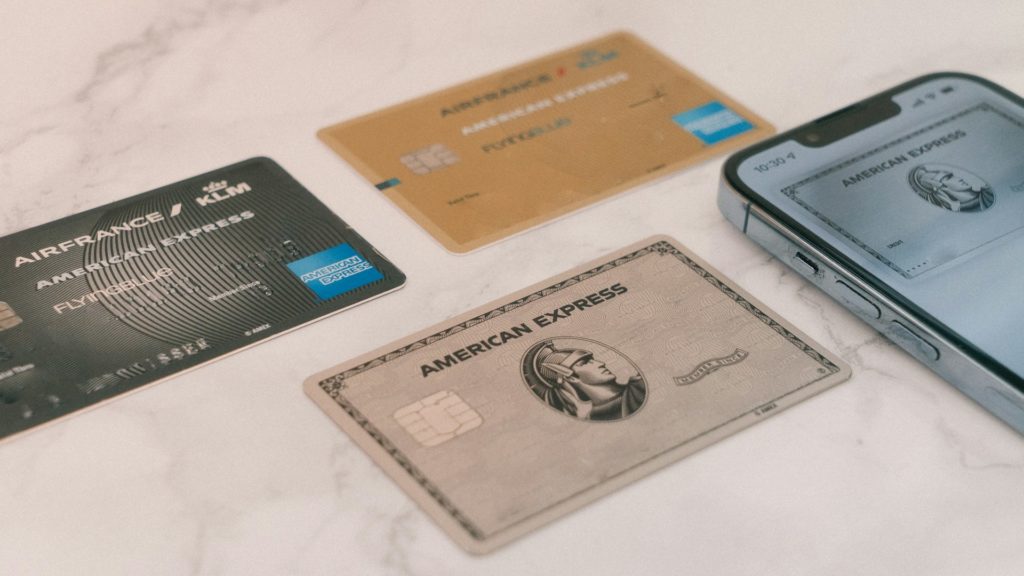
Photo by CardMapr.nl on Unsplash
For many individuals and companies, debt is a means of paying for emergencies, addressing cash flow needs, managing risk, expanding a portfolio, creating relationships with financial institutions, and reducing taxes. Debt has many functions in personal and corporate finance. While it can solve many problems, it can also get out of control.
Losing control of debt is also known as a debt spiral. How does a debt spiral start? It usually begins with one loan—a student loan, mortgage, or other large loan. Such loans can be considered good debt when used to improve financial health. A mortgage can help build an asset, and a student loan can be a stepping stone to a successful career.
Taking out a loan implies you are liquid enough to cover regular payments. Unfortunately, many can falter in this and start looking for risky means to cover their debt. The trouble begins when borrowers take on other forms of debt to supplement their needs and even pay for the original loan. They may also take riskier forms of debt, such as revolving debt. High-interest loans like payday loans may lead to high costs that push people to borrow more.
Things can quickly go out of hand. Interest rates could skyrocket to triple digits if the borrower cannot manage the continuing debt cycle. Apart from increasing rates, loan repayment problems could stay on one’s credit record for several years, making it difficult for the borrower to get a new loan in times of need.
Although there are no quick solutions to break a debt spiral, you can get started on a plan to deal with it and solve it in a reasonable time frame. Here, we discuss the steps for getting out of a debt spiral—healthy goals, strategies, and habits that set you on a path to better finances.
Table of Contents
Top Strategies for Getting Out of Debt
While having a large debt can be overwhelming initially, there are proven ways to overcome it. With some discipline and planning, it is possible to escape a seemingly endless cycle of debt.
According to Experian, the average American consumer debt as of year-end 2022 was $101,915. With the rising cost of living, 77 percent of US households are dealing with debt. A survey conducted by Forbes Advisor found that mortgages, medical bills, and credit cards were top contributors to debt.
Student loan debt is also a heavy contributor to debt spirals. In the US, student loans have ballooned to $1.73 trillion, with an average federal student loan balance of $37,088. Total average balances, which include private loan debts, can go up to $39,981. There are currently 43.2 million borrowers under the federal student loan program.
With millions of people struggling with various forms of debt, knowing where to start is crucial.
Recognize and Admit the Debt Spiral
Awareness is power. You can’t solve a problem without acknowledging its existence. Therefore, it is essential to understand the symptoms of a debt spiral. When juggling multiple loans and making payments hard, it’s time to admit the problem.
Develop a Blueprint
Next, you need to create a debt repayment strategy. The first thing you must do is to stop borrowing money.
Review your income and expenses. Create a new budget that effectively tracks monthly expenses and income, allowing you to make changes where possible. Either you cut your costs or find ways to increase your income. A budget helps determine how much more you need to keep up with debt payments.
When developing your strategy, you need to know which loans to prioritize. Take stock of all your loans. Identify high-interest debt. For example, credit card dues must be moved up the priority ladder because they tend to compound interest the fastest.
Large-value loans also need to be paid soon. They will draw out the most significant dues. A default on a home or mortgage loan can lead to the repossession of a house.
Rank your debts according to the above criteria. Your plan must work around your priority list. Figure out how you can come up with the money to make the payments, including selling or liquidating assets to raise cash.
Debt Snowball vs. Debt Avalanche
In developing your strategy, you need to choose among several repayment methods. The most well-known repayment strategies are the debt snowball and debt avalanche methods.

Photo by Igal Ness on Unsplash
Debt snowball starts with small wins. You allot your extra money to the lowest balances after ensuring all the minimums are paid on your other debts. This method can provide the confidence and momentum you need to overcome your debt problem. You can allocate your cash to the larger ones as you knock off smaller debts.
Debt avalanche tackles the highest-interest debts first. After making the minimum payments on all your debts, you allocate the extra cash to the debts with the highest interest rates. This way, you save more by reducing the interest you’re paying. This method is one way to pay down debts faster.
What if you don’t have enough money to keep up with payments after considering all these options? Options include consulting a nonprofit debt counseling agency to work with creditors to repay your debts with an agreed debt management plan and working with debt relief companies.
Consolidate, Refinance, or Restructure Your Loans
Those struggling with multiple loans may consider consolidating their debt. With debt consolidation, you can simplify debt repayment by integrating various types of debt, such as auto loans, personal loans, and pending credit card balances, into a unified loan with one monthly payment and interest rate.
This strategy allows you to focus on the new loan, which may have a lower interest rate and more favorable terms.
Remember that it is in your lender’s best interest that you pay your dues. They will likely provide you with the assistance in their policy to make your repayment easier. They could offer you refinancing or restructuring. You could refinance to a lower interest rate. You could also restructure your loan to lengthen its tenure and lower the equated monthly installment or EMI.
There are cases where you may be eligible for a moratorium on your loan payments. Nonetheless, delayed dues will attract interest, increasing your total due amount.
Some financial advisers recommend avoiding loan settlements, as they may provide a short-term solution but create long-term problems of bad credit history.
Prevent Future Debt Cycles
Once your debt is under control or you have paid it entirely, it may be tempting to borrow again. Make sure you don’t restart the debt cycle.
One way to prevent future debt cycles is to save for an emergency fund. Not having an emergency fund makes you vulnerable, as a surprise need could bring you back into the cycle. Try to spare as much as you can for your emergency expenses.
The typical estimate is about 6 to 12 months’ worth of expenses, but even a few hundred to a thousand dollars allocated to emergencies can save your finances. Find ways to earn extra income, like taking on gigs or freelance jobs and selling unused items.
Benefits of Debt Freedom
Being free from the shackles of debt can mean game-changing opportunities for individuals from all walks of life. These benefits include:
Better Access to Capital
Aspiring entrepreneurs will find accessing new capital to fund business ventures easier. Capital could be traditional bank loans, alternative loans, angel investments, or institutional investments from venture capitalists.
Increased Flexibility
Being free of debt allows people to pursue new opportunities and lifestyles. Unconstrained by debt servicing, they can nurture ideas, enjoy lifestyle perks and hobbies, or invest without the fear of skipping work or insolvency.
Minimized Financial Risk
Debt-free individuals avoid snowballing debt, rising interest rates, and other problems based on their credit history and status.
Improved Creditworthiness
Responsibly managing debt increases credibility and creditworthiness in the eyes of suppliers, lenders, or partners.
Debt Freedom Is the First Step to Prosperity
Debt spirals hurt financial health. The longer you stay in a debt cycle, the more difficult it is to escape. The risk and interest rates increase when people take on more loans to pay off old loans.
However, there are ways to manage and eventually pay off debt. You can take control of your finances by implementing budgeting, expense reduction, income enhancement, debt consolidation, refinancing, and restructuring. Using debt payment methods like debt snowball or debt avalanche effectively creates momentum and reduces payments over time.
While it may not be obvious, debt freedom eventually leads to prosperity. Being financially free opens many opportunities in investment, business, and life. It lets you move from lacking means, preoccupation, and difficulty to one that allows your money to work for you.

